Article Peer-Reviewed
A Driving Simulator Study to Understand the Impact of Cell Phone Blocking Apps on Distraction
1
Department of Transportation and Urban Infrastructure Studies, Morgan State University, Baltimore, MD 21251, USA
2
Department of Environmental and Civil Engineering, Mercer University, Macon, GA 31207, USA
*
For correspondence.
Received: 7 March 2023 Accepted: 3 June 2023 Published: 8 June 2023
Abstract
Using cell phone blocking apps is an effective way to prevent distracted driving. This study used a high-fidelity driving simulator to examine drivers’ behavior while using a cell phone blocking app. Thirty-five participants drove in a simulated network under four scenarios. Participants also completed pre- and post-survey questionnaires. The results support previous investigations regarding interactions with phones while driving. Results showed that drivers deviated from the center of the road, changed lanes significantly more often, and increased their steering velocity when drivers were interacting with a cell phone. The impacts of cell phone blocking apps were similar to the no distraction scenario while driving. This suggests that using cell phone blocking apps is one of the most effective ways to prevent distracted driving. Survey results indicated that only 23% of drivers used cell phone blocking apps before the experiment. However, 88% of the participants had a positive opinion about using these apps and indicated that they would use such apps after the experiment. These findings support the importance of cell phone blocking apps from a policy perspective and highlight the need to educate drivers about distracted driving prevention technologies.
Figures in this Article
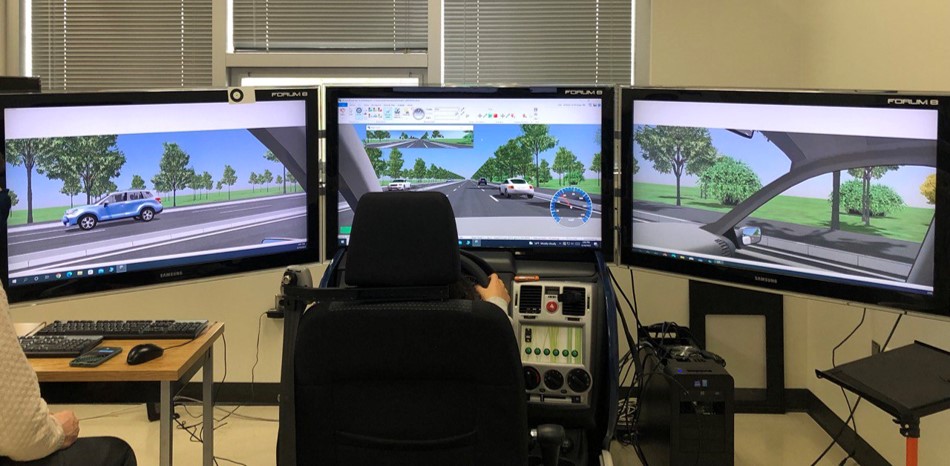 Figure 1
Figure 1
 Figure 2
Figure 2
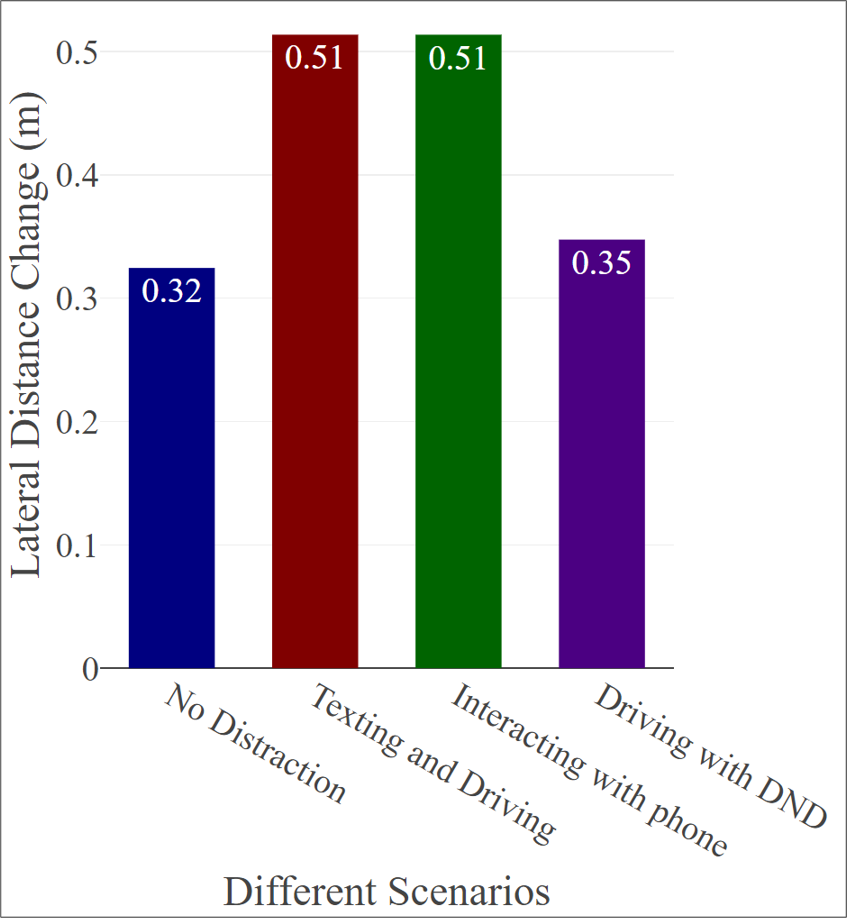 Figure 3A
Figure 3A
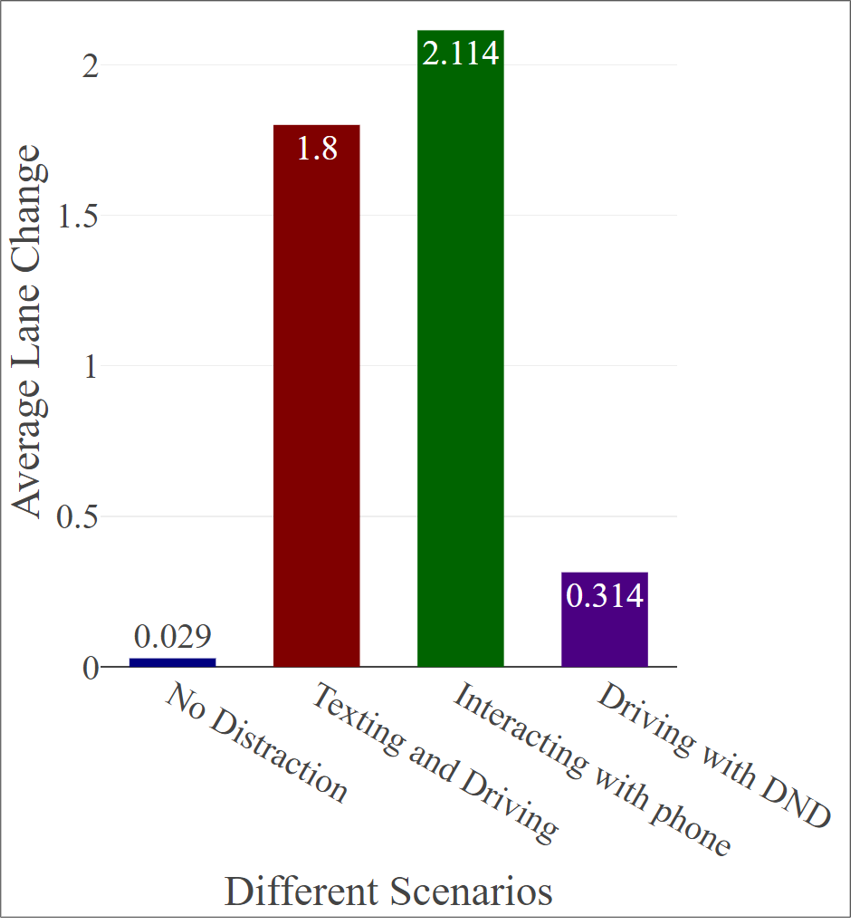 Figure 3B
Figure 3B
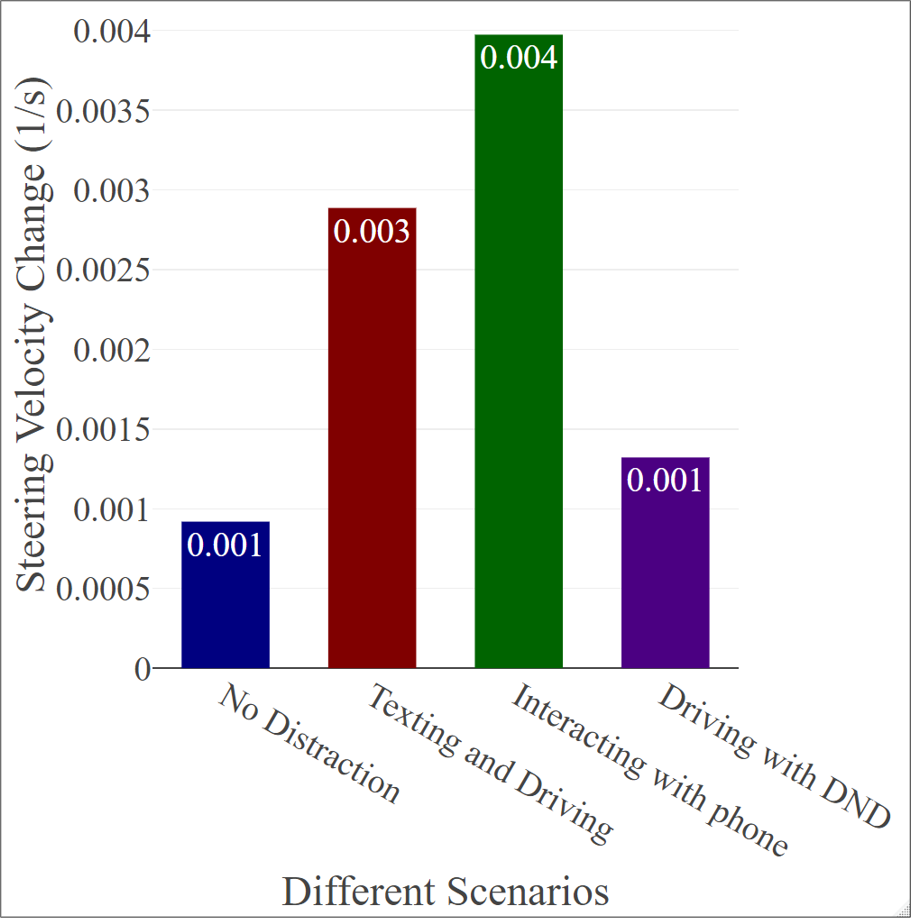 Figure 3C
Figure 3C
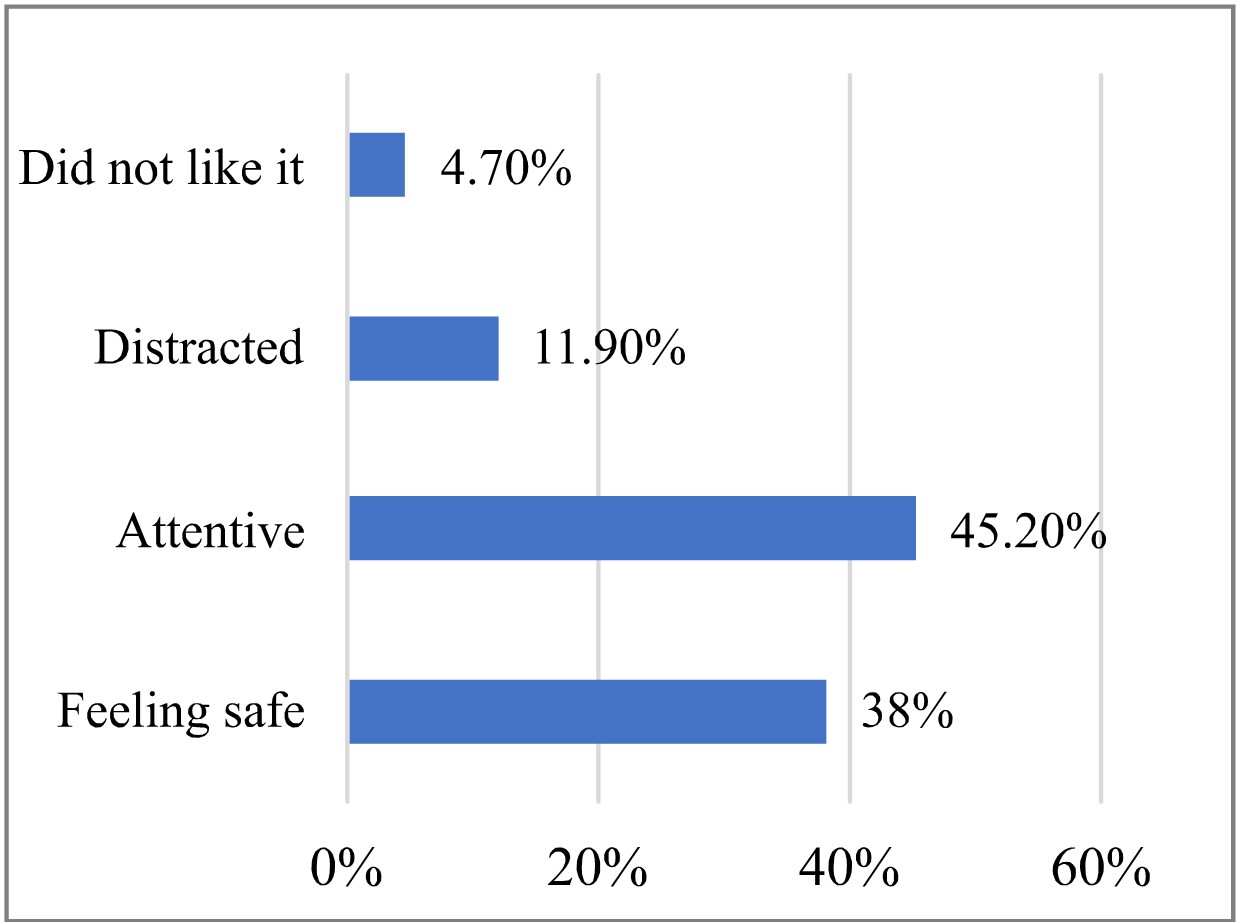 Figure 4
Figure 4
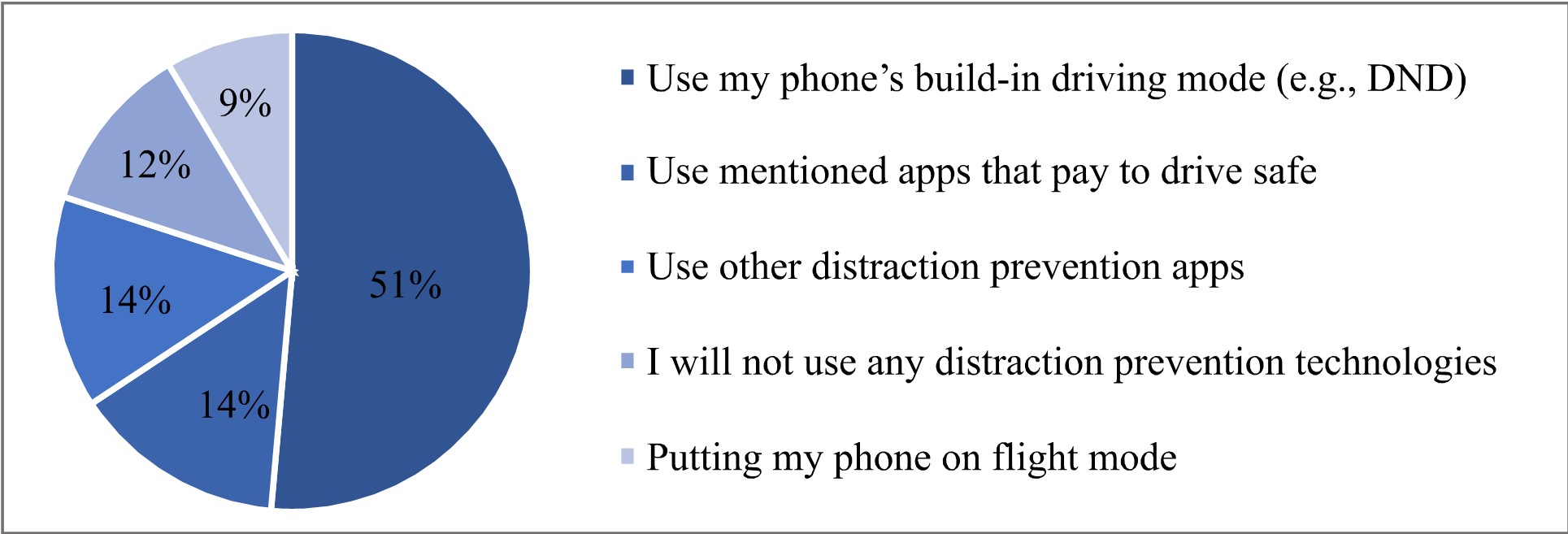 Figure 5
Figure 5
Keywords
Copyright © 2023
Javid et al. This article is distributed under the terms of the Creative Commons Attribution License (CC BY 4.0), which permits unrestricted use and distribution provided that the original work is properly cited.
Funding
This study was financially supported by the Maryland Department of Transportation, Motor Vehicle Administration, Maryland Highway Safety Office.
Cite this Article
Javid, R., Sadeghvaziri, E., & Jeihani, M. (2023). A Driving Simulator Study to Understand the Impact of Cell Phone Blocking Apps on Distraction. Highlights of Vehicles, 1(1), 17–28. https://doi.org/10.54175/hveh1010002
References
1.
Sajid Hasan, A., Jalayer, M., Heitmann, E., & Weiss, J. (2022). Distracted Driving Crashes: A Review on Data Collection, Analysis, and Crash Prevention Methods. Transportation Research Record, 2676(8), 423–434. https://doi.org/10.1177/03611981221083917
2.
NHTSA. Distracted Driving Dangers and Statistics. https://www.nhtsa.gov/risky-driving/distracted-driving (accessed 15 July 2022).
3.
Zendrive. How to prevent distracted driving in 2022: A comprehensive guide. https://www.zendrive.com/blog/how-to-prevent-distracted-driving (accessed 19 July 2022).
4.
Sadeghvaziri, E., Rojas, M. B., & Jin, X. (2016). Exploring the Potential of Mobile Phone Data in Travel Pattern Analysis. Transportation Research Record, 2594(1), 27–34. https://doi.org/10.3141/2594-04
5.
Rojas, M. B., Sadeghvaziri, E., & Jin, X. (2016). Comprehensive Review of Travel Behavior and Mobility Pattern Studies That Used Mobile Phone Data. Transportation Research Record, 2563(1), 71–79. https://doi.org/10.3141/2563-11
6.
Sadeghvaziri, E., & Jin, X. (14–18 May 2017). Deriving Activity Locations Inferred from Smartphone Data. The 16th TRB National Transportation Planning Applications Conference, Raleigh, NC, USA.
7.
Children’s Hospital of Philadelphia Research Institute. Cell Phone Use and Texting While Driving Facts and Statistics. https://www.teendriversource.org/teen-crash-risks-prevention/distracted-driving/cell-phones (accessed 19 July 2022).
8.
Qi, Y., Vennu, R., & Pokhrel, R. (2020). Distracted Driving: A Literature Review (Research Report No. FHWA-ICT-20-004). Illinois Center for Transportation. https://doi.org/10.36501/0197-9191/20-005
9.
Jeihani, M., Javid, R., & Sadeghvaziri, E. (2021) Identifying State-Specific Distracted Driving Target Group. Morgan State University.
10.
Valero-Mora, P. M., Zacarés, J. J., Sánchez-García, M., Tormo-Lancero, M. T., & Faus, M. (2021). Conspiracy Beliefs Are Related to the Use of Smartphones behind the Wheel. International Journal of Environmental Research and Public Health, 18(15), 7725. http://dx.doi.org/10.3390/ijerph18157725
11.
Joyce, L. (7 May 2021). 9 of 10 Drivers Used Their Smartphone Behind the Wheel in 2020. State Farm. https://newsroom.statefarm.com/why-did-89-of-drivers-choose-to-engage-in-distracted-driving-behaviors-in-2020 (accessed 19 July 2022).
12.
The Zebra. (2022). Distracted Driving Statistics 2022. https://www.thezebra.com/resources/research/distracted-driving-statistics (accessed 19 July 2022).
13.
Coleman, S. (2022). Distracted Driving Statistics 2022. Bankrate. https://www.bankrate.com/insurance/car/distracted-driving-statistics (accessed 19 July 2022).
14.
Sleight, M. (2022). Texting and Driving Statistics 2022. Bankrate. https://www.bankrate.com/insurance/car/texting-and-driving-statistics (accessed 19 July 2022).
15.
McCartt, A. T., Braver, E. R., & Geary, L. L. (2003). Drivers’ use of handheld cell phones before and after New York State’s cell phone law. Preventive Medicine, 36(5), 629–635. https://doi.org/10.1016/s0091-7435(03)00021-5
16.
McCartt, A. T., Geary, L. L., & Berning, A. (2003). Observational study of the extent of driving while suspended for alcohol impaired driving. Injury Prevention, 9(2), 133–137. https://doi.org/10.1136/ip.9.2.133
17.
McCartt, A. T., Hellinga, L. A., & Geary, L. L. (2006). Effects of Washington, D.C. law on drivers’ hand-held cell phone use. Traffic Injury Prevention, 7(1), 1–5. https://doi.org/10.1080/15389580500412853
18.
National Safety Council. Technology Can Reduce Cell Phone Distracted Driving. https://www.nsc.org/road/safety-topics/distracted-driving/technology-solutions (accessed 19 July 2022).
19.
Albert, G., Musicant, O., Oppenheim, I., & Lotan, T. (2016). Which smartphone’s apps may contribute to road safety? An AHP model to evaluate experts’ opinions. Transport Policy, 50, 54–62. https://doi.org/10.1016/j.tranpol.2016.06.004
20.
Taherpour, A. (2023). A Holistic Approach to Address Road Safety Issues; A Case Study of Outer Ring Road in Nairobi Kenya. SSRN. https://doi.org/10.2139/ssrn.4387770
21.
Oviedo-Trespalacios, O., King, M., Vaezipour, A., & Truelove, V. (2019). Can our phones keep us safe? A content analysis of smartphone applications to prevent mobile phone distracted driving. Transportation Research Part F: Traffic Psychology and Behaviour, 60, 657–668. https://doi.org/10.1016/j.trf.2018.11.017
22.
Javid, R., Sadeghvaziri, E., & Jeihani, M. (2022). The Effect of COVID-19 on Distracted Driving: A Survey Study. MedRxiv. https://doi.org/10.1101/2022.12.26.22283062
23.
Sadeghvaziri, E., Haleem, K., Alluri, P., Fartash, H., & Gan, A. (10–14 January 2016). Effects of Different Guide Signs on Driver Behavior at Express Lane Entrance: A Driving Simulation Study. Transportation Research Board 95th Annual Meeting, Washington, DC, USA.
24.
Ansariyar, A., Sadeghvaziri, E., & Jeihani, M. (2022). Systematic Review of Bike Simulator Studies. Journal of Science and Cycling, 11(1), 5–29. https://doi.org/10.28985/1322.jsc.01
25.
Papantoniou, P., Papadimitriou, E., & Yannis, G. (2015). Assessment of Driving Simulator Studies on Driver Distraction. Advances in Transportation Studies, 35, 129–144.
26.
Zolali, M., Mirbaha, B., & Behnood, H. R. (5–29 January 2021). Impact of Drivers’ Characteristics on Speed Choice Behavior in Adverse Weather Conditions: A Driving Simulator Study. Transportation Research Board 100th Annual Meeting, Washington, DC, USA.
27.
Ansariyar, A., Ardeshiri, A., Vaziri, E., & Jeihani, M. (8–12 January 2023). Investigating the Traffic Behavior of Bicyclists in Interaction with Car Users on Shared Bike Lanes Without Physical Barriers. Transportation Research Board 102nd Annual Meeting, Washington, DC, USA.
28.
Zolali, M., Mirbaha, B., Layegh, M., & Behnood, H. R. (2021). A Behavioral Model of Drivers’ Mean Speed Influenced by Weather Conditions, Road Geometry, and Driver Characteristics Using a Driving Simulator Study. Advances in Civil Engineering, 2021, 5542905. https://doi.org/10.1155/2021/5542905
29.
Köhn, T., Gottlieb, M., Schermann, M., & Krcmar, H. (2019). Improving take-over quality in automated driving by interrupting non-driving tasks. IUI '19: Proceedings of the 24th International Conference on Intelligent User Interfaces, 510–517. https://doi.org/10.1145/3301275.3302323
30.
Donmez, B., Boyle, L. N., & Lee, J. D. (2006). The impact of distraction mitigation strategies on driving performance. Human Factors, 48(4), 785–804. https://doi.org/10.1518/001872006779166415
31.
Jung, T., Kaß, C., Zapf, D., & Hecht, H. (2019). Effectiveness and user acceptance of infotainment-lockouts: A driving simulator study. Transportation Research Part F-traffic Psychology and Behaviour, 60, 643–656. https://doi.org/10.1016/j.trf.2018.12.001
32.
Née, M., Contrand, B., Orriols, L., Gil-Jardiné, C., Galéra, C., & Lagarde, E. (2019). Road safety and distraction, results from a responsibility case-control study among a sample of road users interviewed at the emergency room. Accident Analysis & Prevention, 122, 19–24. https://doi.org/10.1016/j.aap.2018.09.032
33.
Hinton, J., Watson, B., & Oviedo-Trespalacios, O. (2022). A novel conceptual framework investigating the relationship between roadside advertising and road safety: The driver behaviour and roadside advertising conceptual framework. Transportation Research Part F: Traffic Psychology and Behaviour, 85, 221–235. https://doi.org/10.1016/j.trf.2021.12.002
34.
Costa, M., Bonetti, L., Vignali, V., Bichicchi, A., Lantieri, C., & Simone, A. (2019). Driver’s visual attention to different categories of roadside advertising signs. Applied Ergonomics, 78, 127–136. https://doi.org/10.1016/j.apergo.2019.03.001
35.
Horberry, T., Anderson, J., Regan, M. A., Triggs, T. J., & Brown, J. (2006). Driver distraction: the effects of concurrent in-vehicle tasks, road environment complexity and age on driving performance. Accident Analysis & Prevention, 38(1), 185–191. https://doi.org/10.1016/j.aap.2005.09.007
36.
Sheykhfard, A., & Haghighi, F. (2020). Driver distraction by digital billboards? Structural equation modeling based on naturalistic driving study data: A case study of Iran. Journal of Safety Research, 72, 1–8. https://doi.org/10.1016/j.jsr.2019.11.002
37.
Lym, Y., & Chen, Z. (2021). Influence of built environment on the severity of vehicle crashes caused by distracted driving: A multi-state comparison. Accident Analysis & Prevention, 150, 105920. https://doi.org/10.1016/j.aap.2020.105920
38.
Chen, Z., & Lym, Y. (2021). The influence of built environment on distracted driving related crashes in Ohio. Transport Policy, 101, 34–45. https://doi.org/10.1016/j.tranpol.2020.11.011
39.
Neyens, D. M., & Boyle, L. N. (2008). The influence of driver distraction on the severity of injuries sustained by teenage drivers and their passengers. Accident Analysis & Prevention, 40(1), 254–259. https://doi.org/10.1016/j.aap.2007.06.005
40.
Lee, J. Y., Lee, J. D., Bärgman, J., Lee, J., & Reimer, B. (2018). How safe is tuning a radio?: using the radio tuning task as a benchmark for distracted driving. Accident Analysis & Prevention, 110, 29–37. https://doi.org/10.1016/j.aap.2017.10.009
41.
He, J., McCarley, J. S., Crager, K., Jadliwala, M., Hua, L., & Huang, S. (2018). Does wearable device bring distraction closer to drivers? Comparing smartphones and Google Glass. Applied Ergonomics, 70, 156–166. https://doi.org/10.1016/j.apergo.2018.02.022
42.
Brodeur, M., Ruer, P., Léger, P.-M., & Sénécal, S. (2021). Smartwatches are more distracting than mobile phones while driving: Results from an experimental study. Accident Analysis & Prevention, 149, 105846. https://doi.org/10.1016/j.aap.2020.105846
43.
Giang, W. C. W., Shanti, I., Chen, H.-Y. W., Zhou, A., & Donmez, B. (2015). Smartwatches vs. Smartphones: A preliminary report of driver behavior and perceived risk while responding to notifications. AutomotiveUI '15: Proceedings of the 7th International Conference on Automotive User Interfaces and Interactive Vehicular Applications, 154–161. https://doi.org/10.1145/2799250.2799282
44.
Li, J., Dou, Y., Wu, J., Su, W., & Wu, C. (2021). Distracted driving caused by voice message apps: A series of experimental studies. Transportation Research Part F: Traffic Psychology and Behaviour, 76, 1–13. https://doi.org/10.1016/j.trf.2020.10.008
45.
Knapper, A. S., Hagenzieker, M. P., & Brookhuis, K. A. (2015). Do in-car devices affect experienced users’ driving performance? IATSS Research, 39, 72–78. https://doi.org/10.1016/j.iatssr.2014.10.002
46.
Feng, X., Zhang, X., Zhang, Y., & Cao, L. (2019). Study on Distracted Driving Caused by Taxi-hailing Applications. Zhongguo Jixie Gongcheng / China Mechanical Engineering, 30, 1776–1781. https://doi.org/10.3969/j.issn.1004-132X.2019.15.002
47.
Reagan, I. J., & Cicchino, J. B. (2020). Do Not Disturb While Driving – Use of Cellphone Blockers Among Adult Drivers. Safety Science, 128, 104753. https://doi.org/10.1016/j.ssci.2020.104753
48.
Metz, B., Schömig, N., & Krüger, H.-P. (2011). Attention during visual secondary tasks in driving: Adaptation to the demands of the driving task. Transportation Research Part F: Traffic Psychology and Behaviour, 14, 369–380. https://doi.org/10.1016/j.trf.2011.04.004
49.
Svenson, O., & Patten, C. J. (2005). Mobile phones and driving: a review of contemporary research. Cognition Technology and Work, 7, 182–197.
50.
Ponte, G., & Baldock, M. (6–8 September 2016). An examination of the effectiveness and acceptability of mobile phone blocking technology among drivers of corporate fleet vehicles. The 2016 Australasian Road Safety Conference, Canberra, Australia.
51.
Morton, C. C. (22 August 2012). Why Cell Phone Bans Don’t Work. Science. https://www.science.org/content/article/why-cell-phone-bans-dont-work (accessed 20 July 2022).
52.
Joseph, B., Zangbar, B., Bains, S., Kulvatunyou, N., Khalil, M., Mahmoud, D., et al. (2016). Injury Prevention Programs Against Distracted Driving: Are They Effective? Traffic Injury Prevention, 17, 460–464. https://doi.org/10.1080/15389588.2015.1116042
53.
Cismaru, M., & Nimegeers, K. (2017). “Keep your eyes up, don’t text and drive”: a review of anti-texting while driving Campaigns’ recommendations. International Review on Public and Nonprofit Marketing, 14, 113–135. https://doi.org/10.1007/s12208-016-0166-7
54.
Creaser, J. I., Edwards, C. J., Morris, N. L., & Donath, M. (2015). Are cellular phone blocking applications effective for novice teen drivers? Journal of Safety Research, 54, 75.e29–78. https://doi.org/10.1016/j.jsr.2015.06.014
55.
Albert, G., & Lotan, T. (2019). Exploring the impact of “soft blocking” on smartphone usage of young drivers. Accident Analysis & Prevention, 125, 56–62. https://doi.org/10.1016/j.aap.2019.01.031
56.
Oviedo-Trespalacios, O., Williamson, A., & King, M. (2019). User preferences and design recommendations for voluntary smartphone applications to prevent distracted driving. Transportation Research Part F: Traffic Psychology and Behaviour, 64, 47–57. https://doi.org/10.1016/j.trf.2019.04.018
57.
Oviedo-Trespalacios, O., Truelove, V., & King, M. (2020). It is frustrating to not have control even though I know it’s not legal!”: A mixed-methods investigation on applications to prevent mobile phone use while driving. Accident Analysis & Prevention, 137, 105412. https://doi.org/10.1016/j.aap.2019.105412
58.
Lynch, D. (4 December 2019). Do Not Disturb While Driving: iPhone Safety Feature Explained! Payette Forward. https://www.payetteforward.com/do-not-disturb-while-driving-iphone-safety-feature-explained (accessed 10 July 2022).
59.
Javid, R. J., Salari, M., & Javid, R. J. (2019). Environmental and economic impacts of expanding electric vehicle public charging infrastructure in California’s counties. Transportation Research Part D: Transport and Environment, 77, 320–334. https://doi.org/10.1016/j.trd.2019.10.017
60.
Javid, R., & Sadeghvaziri, E. (2022). Investigating the Relationship Between Access to Intercity Bus Transportation and Equity. Transportation Research Record, 2676(9), 711–719. https://doi.org/10.1177/03611981221088218
61.
Jeihani, M., Ansariyar, A., Sadeghvaziri, E., Ardeshiri, A., Kabir, M. M., Haghani, A., et al. (2022). Investigating the Effect of Connected Vehicles (CV) Route Guidance on Mobility and Equity. Morgan State University / National Transportation Center.
62.
Jeihani, M., Javid, R., & Sadeghvaziri, E. (2022). Public Education about Occupant Protection Technologies and Protecting Occupants with Disabilities. Morgan State University / National Transportation Center.
63.
Jeihani, M., Javid, R., & Sadeghvaziri, E. (2022). Educating the Public About Distracted Driving and Evaluating Distraction-Prevention Technologies. Morgan State University / National Transportation Center.
64.
Sadeghvaziri, E., & Tawfik, A. (2017). Using the 2017 National Household Travel Survey Data to Explore the Elderly’s Travel Patterns. In G. Zhang (Ed.), International Conference on Transportation and Development 2020 (pp. 86–94). American Society of Civil Engineers. https://doi.org/10.1061/9780784483169.008
65.
Javid, R., & Sadeghvaziri, E. (2023). Assessing Gender Gaps in Citi Bike Ridership in New York City. SSRN. https://doi.org/10.2139/ssrn.4358660
66.
Javid, R. J., Xie, J., Wang, L., Yang, W., Javid, R. J., & Salari, M. (2021). High-Occupancy Vehicle (HOV) and High-Occupancy Toll (HOT) Lanes. International Encyclopedia of Transportation, 45–51. https://doi.org/10.1016/b978-0-08-102671-7.10292-1
67.
Amini, M., & Jahanbakhsh Javid, N. (2023). A Multi-Perspective Framework Established on Diffusion of Innovation (DOI) Theory and Technology, Organization and Environment (TOE) Framework Toward Supply Chain Management System Based on Cloud Computing Technology for Small and Medium Enterprises. International Journal of Information Technology and Innovation Adoption, 11, 1217–1234.
68.
Javid, R., & Sadeghvaziri, E. (2023). Equity Analysis of Bikeshare Access: A Case Study of New York City. Findings. https://doi.org/10.32866/001c.73906
69.
Sadeghvaziri, E., Javid, R., & Jeihani, M. (2023). Investigating Walking and Biking Activities Among Low-Income African Americans. Morgan State University.
70.
Jeihani, M., Ansariyar, A., Sadeghvaziri, E., Ardeshiri, A., Rakha, H., & Fadhloun, K. (2022). Bicyclist Longitudinal Motion Modeling (Report No. UMEC-035). Virginia Tech / Morgan State University.
Metrics
Loading...
Journal Menu
Journal Contact
Highlights of Vehicles
Editorial Office
Highlights of Science
Avenida Madrid, 189-195, 3-3
08014 Barcelona, Spain
08014 Barcelona, Spain
Jene Zhang
Managing Editor